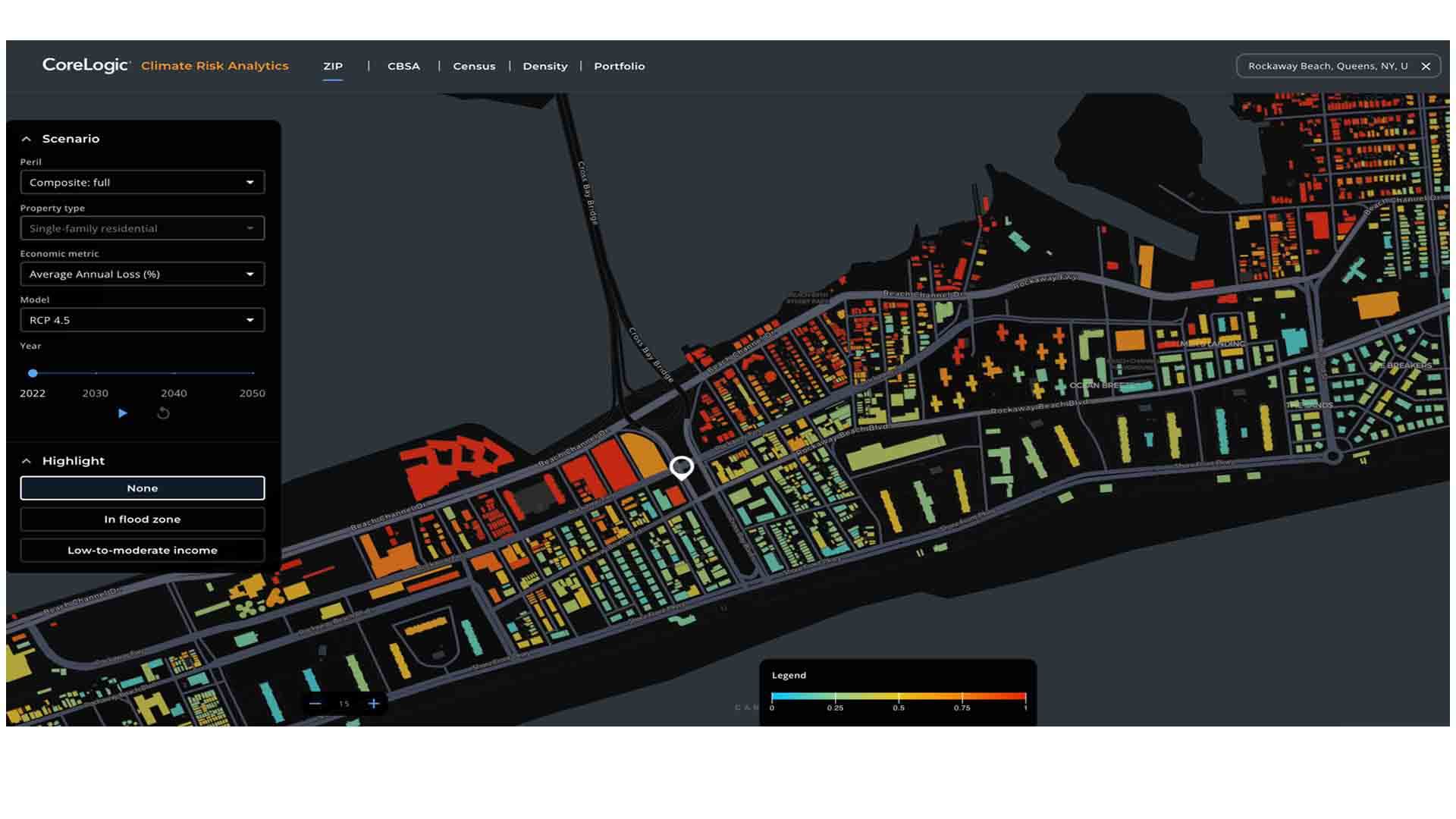Climate-Coupled-Catastrophe Models™ (C3 Models™): Combines climate and property data to help build resilient communities
In an era of rapidly changing climate patterns, the property market faces an unprecedented challenge: understanding and mitigating the risks posed by extreme weather events. The key to tackling this challenge lies in the integration of climate science and catastrophe modeling.
In a recent white paper, CoreLogic explores the importance of this integration by diving into the power of climate-coupled-catastrophe models and how they provide a comprehensive view of future natural hazards.
Climate change is leading to more extreme and frequent weather events. Hurricanes, winter bomb cyclones, wildfires, and floods are wreaking havoc across global property markets. To effectively prepare for and respond to these events, it is essential to understand how climate change is altering the natural hazard landscape.
While the principles governing storm intensification remain constant, climate change is influencing the spatial distribution, frequency, and severity of these events. Therefore, a holistic approach is needed — one that combines forward-looking climate projections with catastrophe models.
Explore the Full White Paper

Catastrophe Modeling Is Evolving Alongside Climate Change
Catastrophe (CAT) models have come a long way since their inception over 25 years ago. While a traditional CAT model comprises three main modules — hazard, vulnerability, and financial integrated within a probabilistic framework — this approach only considers historical data and does not permit modelers to anticipate future climate changes.
One of the challenges in CAT modeling is addressing the limited weather data in the historical record. To overcome this, models like CoreLogic’s simulate hundreds of thousands of years of possible weather events. Using the latest scientific research alongside granular, dynamically downscaled data, our models provide insights into future climate hazards and incorporate vulnerability models as well as financial risk measures. This approach provides a more comprehensive understanding of risk by revealing insights that might not be apparent from the observational record alone.
C3 Models™: Embracing Innovation
C3 Models™ is changing the forecast for the future of catastrophe modeling by offering highly detailed property risk assessments combined with future climate risk probabilities, enabling stakeholders to make informed decisions based on enriched datasets.
- The C3 Models™ Hazard Module is a superior approach to defining the frequency and severity of hazards. It uses a stochastic event set to represent the full spectrum of hazard frequency and severity under future climate conditions rather than assuming an unrealistic uniformity in risk.
- The C3 Models™ Vulnerability Module ensures accurate property-level damage predictions by drawing from extensive property loss data and structural engineering analyses. The model can also account for future construction practices and building code improvements.
- The C3 Models™ Financial Module calculates property-level risk measures, incorporating insurance and reinsurance policies, measuring the probability of default and loss-given-default for every property loan.
C3 Models™ integrates the above modules to create future year loss tables and comprehensive climate change risk measures.
As our climate continues to evolve, innovative approaches are essential for understanding and mitigating risk. Climate-Coupled-Catastrophe Models™ (C3 Models™) offers a powerful tool for making informed decisions, developing robust risk mitigation strategies, and adapting to our changing environment. By leveraging advanced technology, scientific research, and comprehensive data, these models provide a holistic view of future natural hazards, empowering all of us to better manage and mitigate the risks ahead to build a more resilient future.
Explore the Full White Paper
©2024 CoreLogic, Inc. The CoreLogic statements and information in this blog post may not be reproduced or used in any form without express written permission. While all the CoreLogic statements and information are believed to be accurate, CoreLogic makes no guarantee, representation, or warranty, express or implied, including but not limited to as to the completeness, accuracy, applicability, or fitness, in connection with the content or information or the Climate-Coupled-Catastrophe Models product and assumes no responsibility or liability whatsoever for the content or the information or the Climate-Coupled-Catastrophe Models product or any reliance thereon. CoreLogic®, Climate-Coupled-Catastrophe Models ™, and C3 Models™ are the trademarks of CoreLogic, Inc. or its affiliates or subsidiaries.


